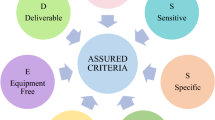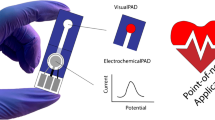Abstract
Forensic genetic analysis of items possibly handled by a suspect or a victim is frequently inquired by the law enforcement authorities, since DNA left on touched objects can often be linked to an individual. Due to technical improvement, even poor traces, which seemed to be unsuitable for DNA analysis a few years ago, may be amplified successfully today. Yet, DNA can be transferred to a crime scene artificially or unintentionally without any primary contact between the individual and the object found at the crime scene, the so-called secondary transfer or indirect transfer in general. In this study, “secondary transfer” scenarios with cells and DNA of different origins under wet conditions were investigated. Transfer was simulated as either “washing by hand” in a washtub or as “machine laundry” in a washing machine. As expected, major differences were seen between blood stains and epithelial abrasions. DNA from blood donors could be detected clearly both on the donor and on the acceptor textile, regardless of washing method. Regarding epithelial abrasions, simulating worn clothes, after washing by hand, only little residual DNA was found, and partial profiles were displayed on the donor textile, while transfer to the acceptor textile occurred even less and not in noteworthy amount and quality. Single alleles could be found both on donor textiles and acceptor textiles after simulated machine wash, but no reliable DNA profile could be verified after laundry in machine. Therefore, a DNA transfer from one worn cloth (without blood stains) to another textile in the washing machine seems to be extremely unlikely.
Similar content being viewed by others
References
van Oorshot RAH, Jones MK (1997) DNA fingerprints from fingerprints. Nature 387:767
Wickenheiser RA (2002) Trace DNA: a review, discussion of theory, and application of the transfer of trace quantities of DNA through skin contact. J Forensic Sci 47:442–450
van Oorshot RAH, Ballantyne KN, Mitchell RJ (2010) Forensic trace DNA: a review. Investg Genet 1:14
Findlay I, Taylor A, Quirke P (1997) DNA finger-printing from single cells. Nature 389:555–556
Elliott K, Hill DS, Lambert C, Burroughes TR, Gill P (2003) Use of laser dissection improves the recovery of DNA from sperm on microscope slides. Forensic Sci Int 137:28–36
DiMartino D, Giuffrè G, Staiti N, Simone A, Todaro P, Saravo L (2004) Laser microdissection and DNA typing of cells from single hair follicles. Forensic Sci Int 146(Suppl):S155–S157
Schneider H, Sommerer T, Rand S, Wiegand P (2011) Hot flakes in cold cases. Int J Legal Med 125:543–548
Rutty GN (2000) Human DNA contamination of mortuaries: does it matter? J Pathol 190:410–411
Schwark T, Poetsch M, Preusse-Prange A, Kamphausen T, von Wurmb-Schwark N (2012) Phantoms in the mortuary—DNA transfer during autopsies. Forensic Sci Int 216:121–126
Locard E (1930) The analysis of dust traces. Part I. Am J Polit Sci 1:276–298
Morrish R (1940) The police and crime detection today. Oxford University Press, London, p 72
Kirk PL (1953) Crime investigation. Interscience Publishers, New York: 4
Meakin G, Jamieson A (2013) DNA transfer: review and implications for casework. Forensic Sci Int Genet 7:434–443
Lowe A, Murray C, Whitaker J, Tully G, Gill P (2002) The propensity of individuals to deposit DNA and secondary transfer of low level DNA from individuals to inert surfaces. Forensic Sci Int 129:25–34
Djuric M, Varljen T, Stanojevic A, Stojkovic O (2008) DNA typing from handled items. Forensic Sci Int Genet (1):411–412
Phipps M, Petricevic S (2007) The tendency of individuals to transfer DNA to handled items. Forensic Sci Int 168:162–168
Kamphausen T, Schadendorf D, von Wurmb-Schwark N, Bajanowski T, Poetsch M (2012) Good shedder or bad shedder—the influence of skin diseases on forensic DNA analysis from epithelial abrasions. Int J Legal Med 126:179–183
Poetsch M, Bajanowski T, Kamphausen T (2013) Influence of an individual’s age on the amount and interpretability of DNA left on touched items. Int J Legal Med 27:1093–1096
Goray M, Eken E, Mitchell RJ, van Oorschot RAH (2010) Secondary DNA transfer of biological substances under varying test conditions. Forensic Sci Int Genet 4:62–67
Raymond JJ, van Oorschot RAH, Gunn PR, Walsh SJ, Roux C (2009) Trace evidence characteristics of DNA: a preliminary investigation of the persistence of DNA at crime scenes. Forensic Sci Int Genet 4:26–33
Zoppis S, Muciaccia B, D’Alessio A, Ziparo E, Vecchiotti C, Filippini A (2014) DNA fingerprinting secondary transfer from different skin areas: morphological and genetic studies. Forensic Sci Int Genet 11:137–143
(2010) Textiles—tests for colour fastness—part C06: colour fastness to domestic and commercial laundering (ISO 105-C06:2010); German version EN ISO 105-C06:2010. Beuth Verlag GmbH, Berlin
DeSalle R, Bonwich E (1996) DNA isolation, manipulation and characterization from old tissues. Genet Eng 18:13–32
Poetsch M, Bayer K, Ergin Z, Milbrath M, Schwark T, von Wurmb-Schwark N (2011) First experiences using the new Powerplex® ESX17 and ESI17 kits in casework analysis and allele frequencies for two different regions in Germany. Int J Legal Med 125(5):733–739
Goray M, Mitchell RJ, van Oorschot RAH (2010) Investigation of secondary DNA transfer of skin cells under controlled test conditions. Legal Med 12:117–120
Wiegand P, Heimbold C, Klein R, Immel U, Stiller D, Klintschar M (2010) Transfer of biological stains from different surfaces. Int J Legal Med 125:727–731
Goray M, Mitchell RJ, van Oorschot RAH (2012) Evaluation of multiple transfer of DNA using mock case scenarios. Legal Med 14:40–46
Stouder SL, Reubush KJ, Hobson DL, Smith JL (2001) Trace evidence scrapings: a valuable source of DNA? Forensic Sci Commun 3(4)
Author information
Authors and Affiliations
Corresponding author
Electronic supplementary material
Below is the link to the electronic supplementary material.
Fig. S1
Prepared stainless steel beakers containing cloths and detergent. (DOC 4735 kb)
Fig. S2
Electropherogram of transfer of blood DNA after machine-washing, shown are the loci D3S1358, TH01, D21S11 and D18S51. DNA profile of the individual no. 11 (above), full DNA profile on the donor cloth (middle), and partial DNA profile on the acceptor cloth (below). (DOC 172 kb)
Fig. S3
Electropherogram of transfer of DNA from epithelial abrasions after machine-washing, shown are the loci D3S1358, TH01, D21S11 and D18S51. DNA profile of the individual no. 11 (above), results from the donor cloth (middle), and results from the acceptor cloth (below). (DOC 180 kb)
Rights and permissions
About this article
Cite this article
Kamphausen, T., Fandel, S.B., Gutmann, J.S. et al. Everything clean? Transfer of DNA traces between textiles in the washtub. Int J Legal Med 129, 709–714 (2015). https://doi.org/10.1007/s00414-015-1203-5
Received:
Accepted:
Published:
Issue Date:
DOI: https://doi.org/10.1007/s00414-015-1203-5




